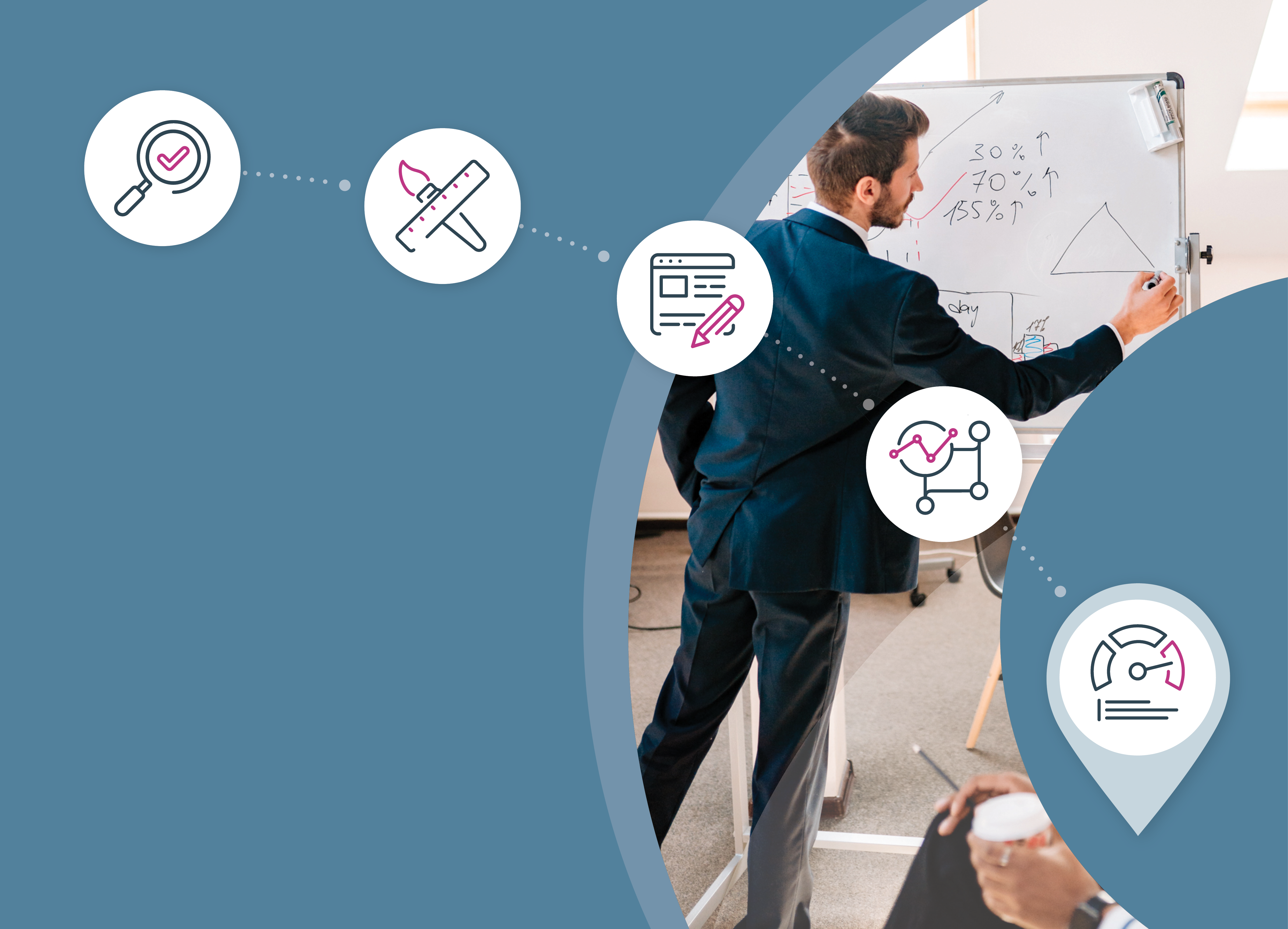Since the 1970s, ADDIE has been the go-to model for learning design. ADDIE is a process consisting of five steps - analyse, design, develop, implement, evaluate. These are followed consecutively by the learning designer, and each step is completed in full before moving on. As such, each previous step informs the subsequent ones - fitting perfectly into a waterfall project management approach.
But how does this work when an organisation wants to take an Agile approach to project management?
What is ADDIE?
ADDIE is one of the most widely used learning design methodologies. The steps are as follows:
1. Analyse
The first step under the ADDIE methodology is data gathering and analysis. During this stage, the learner designer focuses on gathering and analysing information about the learning objectives, goals, program requirements, and the learners themselves.
2. Design
The information gathered in the Analysis phase then informs the Design phase. A learning designer will identify the source content needed to address learner needs and is chunked into bite-sized lessons. They will also make other practical decisions about structure, delivery methods, course duration, and assessments and often design a testing prototype.
3. Develop
Just as the name suggests, the Develop phase covers the creation of the module content itself. Whether it is creating written content, video content or graphics, this phase focuses on fleshing out the design decisions made above and ends with the completed module. However, it is also important to note that this stage does allow for some testing to ensure the learning experience will work as expected.
4. Implement
The content developed in the previous stage is deployed to learners.
5. Evaluate
Once the program is implemented and learners complete the module, the learning designer will enter the Evaluate phase. This will focus on whether the learning has achieved its goals and the overall satisfaction with the module. The outcomes of this can then be fed into a new cycle of development to ensure ongoing improvement.
What is Agile?
Agile was originally used to manage software development, but organisations are increasingly adopting an Agile approach to meet the demands of businesses and the growing expectations of their customers – and the learning world is no different. The Agile method is focused on speed, collaboration and flexibility.
It's a non-linear method that uses short, focused working sprints. By breaking learning down into smaller chunks, it allows organisations to roll out learning faster. This process also ensures that learning is reviewed more quickly, offering increased opportunities for reviewing and feedback. It's almost like you're completing the ADDIE process again and again multiple times.
The benefits of the agile methodology are that it allows learning teams to be, well, agile. The approach is iterative and allows room for testing, experimenting and learning, and benefits from input from all stakeholders, SMEs, designers and even learners.
Is it always one or the other?
If you're an ADDIE purist, you might have difficulty making this work. But with a little flexibility, you can have the best of both worlds.
Some things to consider if you are thinking about combining Agile and ADDIE:
- How much flexibility do you need in this project? If your project requires more flexibility, combining ADDIE and Agile might be a good fit. Using the two together allows for small teams to work on different parts of the project and report in regularly. This means that stakeholders can see and comment on a part of the project earlier on, allowing for iteration and improvement in future sprints.
- Do you predict a change in scope or requirements throughout the project? If this is the case, Agile development is probably a better fit. It allows for more iteration and, therefore, a better product while making it much easier to respond to the project's changes.
- How important is collaboration to your project? Utilising Agile design increases focus on collaboration and communication between stakeholders at all phases of the process.
- How complicated is your project? If your project is more complex, sticking to ADDIE, particularly in the Analyse and Design phase might be a better solution for you.
- How quickly do you need to create your eLearning? Smaller projects, and those with ambitious timelines, will benefit from using an Agile approach. This is not to say that the process of ADDIE isn't followed; it's more than the lines between the phases are blurred.
Our Approach
Here at Guroo Producer, we're huge believers in the Agile methodology. That's why we created guroo.pro as an Agile authoring tool. But what does that mean?
It has been built to
-
Allow for multiple authors, encouraging collaboration
-
Include an Agile board to track progress
-
Utilise live preview, review and commenting functions to allow for an iterative and collaborative approach
Want to see it for yourself? Start a trial now.


